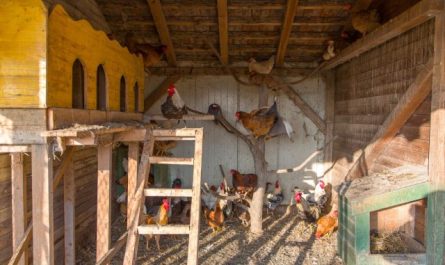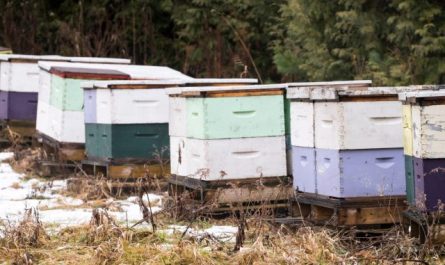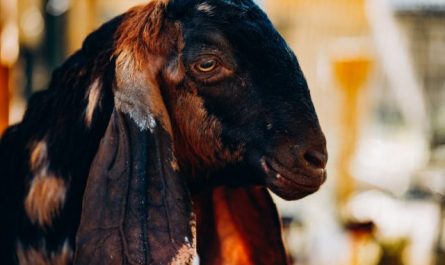Recently, the culture of handling pets has grown, especially in large cities. Many people keep dogs as companions, dog-friendly cafes and shops have appeared, where visitors with cute dogs are sincerely welcome. The number of pet shops, grooming salons, and training halls has increased many times. A socialized and well-groomed dog has become the pride of its owner and an indicator of his well-being. At the same time, in rural areas it is difficult to imagine a yard without a dog sitting on a chain. City dwellers consider such keeping cruel, and villagers consider keeping a dog in an apartment wild.

In this article I will try to tell you why keeping your pet chained all the time is harmful, and not only for your dog. And also how to minimize the harmful effects of keeping your pet chained. I suggest we look into these issues in the following points.
Deterioration of the dog’s physical development and health
For normal development, a dog needs physical activity. In the wild, predators of the canine family, which includes domestic dogs, run tens of kilometers. Without movement, animals experience decreased muscle tone and atrophy, curvature and weakness of the hind limbs (degenerative changes and even paralysis), excess weight and related cardiovascular diseases may appear. This is especially noticeable in large dogs chained at a young age.
In addition, if the animal is not walked, it relieves itself near its resting and eating place. The dog can scatter feces in a chain and then lie down to rest on this place. Such maintenance leads to the pet becoming infected with internal and external parasites, various skin diseases. Constant contamination leads to deterioration of the quality of the coat, and the dog freezes in the cold. If the dog is walking, it also relieves itself during the walk.

If you are forced to keep your dog on a chain:
To avoid health problems due to this, it is recommended to walk the dog every morning and evening. The dog should have a balanced diet with the necessary vitamins and microelements, in cold weather the caloric content of the diet is increased, and the portion is increased and given warmed up. In winter, it is recommended to feed twice a day.
The area where the dog is located, the animal itself and the booth must be cleaned, treated for ticks and fleas, disinfected. The chain must be long (3-5 times longer than the animal’s body) and secured to a swivel. The best option is a block, when the chain slides between two posts along a stretched wire. The collar is wide, two fingers should fit under it. Strict parforce collars and choke collars are strictly prohibited.
The animal must be combed, its eyes, ears and limbs must be examined. For guard duty, it is better to sterilize the dog, this will not affect its working qualities.

Dog mental health
Chained dogs are rarely played with, walked, or socialized with. This leads to “sensory deprivation” (restriction or lack of stimulation of the senses). The animal may become embittered and unsocialized. Chained dogs often exhibit destructive behavior: licking their limbs, chasing their tails, constantly digging, catching imaginary flies, barking and howling for no reason.
A dog is a pack animal and suffers greatly from lack of communication with other dogs. It is advisable to allow the dog to play with its relatives. Or keep two dogs of the same sex that grew up together. When walking with a dog, you need to play, practice commands (it is imperative to teach it the basic commands “Come to me”, “Next to me”, “No”, “Place”, “Sit”, “Lie down”). The dog should have toys. You cannot hit or intimidate the dog.

Animal safety
A dog on a chain very often becomes a victim of an accident. The chain injures the limbs, can get tangled or freeze and the dog will not be able to enter the kennel, saving itself from frost, heavy rain or scorching sun. The dog can jump over the fence and strangle itself, hanging on the chain. An intruder can easily eliminate a dog on a chain in the most cruel way. There are frequent cases of death or serious injuries of chained dogs from wolves or stray dogs. Do not forget about the danger of the appearance of unwanted offspring, various infectious diseases, including rabies and leptospirosis, which are dangerous to humans.
If you are forced to keep your dog on a chain:
To protect your property, it is better to build a closed enclosure with a booth and surround the area with a reliable fence. In this case, the dog will rest in the enclosure during the day and bark when necessary, and at night it can be let out for a free walk.

Safety and well-being of others
If previously you could see mongrels on a chain, now Caucasian and Central Asian shepherds, as well as other large guard dog breeds, are often chained. These dogs need early socialization and training – they need to be introduced to domestic animals and people. Otherwise, a dog that breaks free from its chain can cause a lot of trouble: attack, scare or bite, kill a small dog or cat, injure livestock or poultry. The animal can also cause an accident. And the dog’s owner will have to answer for all this.
Under no circumstances should you set a dog on people or animals – this is prohibited by Federal Law No. 498 “On Responsible Treatment of Animals”.

Cruel treatment
In some countries (Hungary, Romania, Austria and Scandinavia) keeping dogs on a chain is considered cruelty to animals and is prohibited by law. In our country, keeping dogs on a chain is not prohibited and is not regulated in any way. Cruelty to animals is punishable. In particular, the above-mentioned Federal Law No. 498 “On Responsible Treatment of Animals” was adopted; cruelty to animals is a criminal offense under Article 245 of the Criminal Code of the Russian Federation.
One might object that dogs are often used in departmental kennels for guard duty. But a guard working dog does not sit on a chain all the time.
Each such dog has an enclosure for rest, the handler sends it on guard duty (guard duty can be either free walking or sitting on a chain), and after work the dog is taken to the enclosure for feeding and rest. Guard dogs are supposed to undergo daily examination (if necessary, veterinary) and be walked twice a day. In addition, guard dogs are prepared according to special standards. Training for all special services is carried out only after completing a general training course so that the animal is controllable. And only then the dog is taught to be vigilant and fight an intruder, even while on a chain block.
Exceptions to the rule
Of course, there are reasons why it is impossible to keep a pet off-leash at a summer cottage. I can give an example from my own experience. My mother took a dog that was abandoned on a leash by its previous owners. They took it from a shelter. The mongrel Sonya, a medium-sized dog, fought with our dogs and chased cats, and also ran away to walk on her own. Mom was forced to put her on a chain. Gradually, she got used to dogs, cats and chickens. They communicate with her, walk her, she plays with dogs and no longer sits on a chain. She lives in the yard, sleeps in a barn or a kennel, and spends the night in the house in winter or during a thunderstorm.
We trained our other dog, a young Scottish setter, to be chained specially. The thing is that she easily jumps over the fence, and the neighbors are afraid of her. We put this dog on a chain after a walk if everyone is busy. But mostly she lives in the house. So Sonya rather plays the role of a bell, and the setter specifically guards the house.
If the unfortunate dog sits on a short chain for years, then he only guards his kennel and bowl.
However, sometimes a dog must be kept on a leash by law:
- The fence is not secure and the dog tends to wander freely.
- You have guests or neighbors’ children have come to play with your child. In this case, it is better to chain the dog and not allow anyone to approach it. This is especially true for tipsy guests.
- There is a rabies quarantine in your area (all dogs must be vaccinated against rabies annually by law).
- A guard dog must be kept on a secure leash if the area is open to unauthorized persons to avoid accidents.

Training a dog to a chain
Puppies are trained to be kept on a chain when they are at least 4-5 months old. They are introduced to the kennel, put on a leash for a short time, rewarding the puppy with a treat or a toy for calm behavior and vigilance.
It is strictly forbidden to keep smooth-haired dogs (Dobermans, short-haired mastiffs, Cane Corso, Argentine Dogo, etc.) on a chain. The exception is the Rottweiler, which has an undercoat and a sufficient layer of subcutaneous fat.
Remember that the dog must have constant access to fresh clean water, sufficient balanced nutrition, timely treatment of diseases or injuries and their prevention, a comfortable insulated booth and protection from the sun, walks and games with a beloved owner, the opportunity to communicate with relatives. And, of course, it is unacceptable to beat and intimidate the animal. With such maintenance, the dog’s life will be no worse than in a city apartment with short walks on a short leash.




















